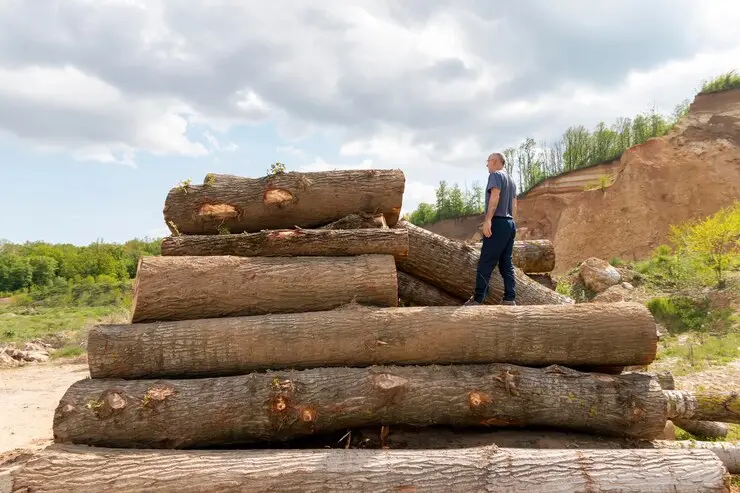In the wood industry being able to determine the strength of lumber is vital for quality assurance security, efficiency, and utilization of the material. The use of lumber is widespread in furniture construction as well as other areas where the integrity of the structure is vital. In the past, lumber grading has relied on methods like physical inspection as well as mechanical tests. Although they are effective to a certain degree these techniques can take enough time, are slow, and are inconsistent. The development of real-time smart methods, together with the X-ray technique and AI (AI) has revolutionized how measuring the strength of wood is done. This article examines the benefits as well as the benefits and issues of together X-ray technology to assist lumber graders and how they have transformed the lumber industry.
The Importance of Accurate Lumber Strength Estimation
The estimation of the strength of lumber is vital in ensuring the safety and quality security of products made from wood. When it comes to construction, poor quality or damaged wood can result in structural issues that require expensive repair or, in extreme cases risk the safety of others. The traditional methods of grading lumber, such as visual inspection which requires assessing the surface of defects as well as mechanical stress rating that measures stiffness are often utilized to grade the quality of Lumber Takeoff services by the structural characteristics. These methods, however, are prone to overlooking internal defects like the presence of cracks, decay that is hidden, or even voids that may not be evident on the outside but can significantly alter the structural strength of lumber.

The X-ray image technology offers a solution to bring a peek into the internal structure of the lumber. In the process of capturing precise images of the interior structure of wood and exterior, X-ray technology is able to identify features that affect the strength of the structure. Combining AI in conjunction with X-rays improves the accuracy of these images since AI algorithms are able to analyze these images at a real-time rate giving immediate estimates of the strength and durability of lumber by analyzing both external and internal properties.
Understanding X-Ray Imaging for Lumber Analysis
The use of X-rays in the analysis of Lumber takeoffs works in a similar way to medical X-rays which are a form of radiation that passes through the wood. However, areas that are more dense take in more radiation. Denser areas are darker in the X-ray image. This helps to identify imperfections like decay, knots, and irregular grain structure which affect the strength of lumber. Because wood isn’t a uniform substance, the characteristics of the direction of grain, density as well as natural flaws all influence its properties as a structural material. The X-ray image captures these inner aspects, providing useful information that could otherwise be overlooked when performing a surface inspection.
The primary characteristics identified with the X-ray image are 2×6 actual Size, growth ring spread, decay inside, and grain angle. All can be crucial in predicting the strength of the wood. The larger knots, for instance, can result in weak spots that limit the load-bearing capacity of lumber and densely packed growth rings typically show greater strength and density. This knowledge inside the wood industry allows the industry of wood to categorize the lumber in a precise manner, making sure that only those with the right quality and strength are used in load-bearing processes.
Role of Artificial Intelligence in X-Ray-Based Strength Estimation
Artificial intelligence plays an essential part in the analysis of X-ray images to determine the strength of lumber accurately and quickly. By together machine learning, AI algorithms can be trained using huge X-ray image datasets which are each tagged with their known strength levels like modulus of elasticity (MOE) as well as modulus of fracture (MOR) that are the most common measures of a wood’s resistance against bending and breaking. When the machine learns to connect the characteristics of an image with properties of strength and becomes adept in recognizing the strength of wood and strength with little human involvement.
With the help of supervised learning models, AI employs supervised learning to determine whether the AI is able to predict the critical characteristics of every piece of wood, in real-time. If X-rays are taken, AI algorithms assess them instantly, making calculations of strength-related parameters and classifying each piece of wood as compatible with the standards of grading that have been established. Intelligent systems are able to adapt and able of improving their prediction when they analyze more data which outcome in constant improvement as well as greater precision over the course of time. Furthermore, AI-based systems may be tailored to particular species of wood or adjusted to the regional standards for grading thus making them incredibly adaptable to meet the various needs of the wood sector.
Advantages of Real-Time X-Ray-Based Intelligent Systems
Real-time intelligent systems for lumber grading provide several significant advantages over traditional methods. Efficiency and speed are two of the main advantages. Unlike conventional methods of grading may slow production because of the amount of duration required for inspections or testing mechanically and X-ray equipment can analyze each piece of lumber in real-time while not interfering with workflow. Real-time assessments allow for seamless integration in production lines, enhancing productivity and cutting down on labor expenses.
Another benefit is the increased accuracy that can be provided through X-ray-based technology. Since X-ray imaging studies the inside structure of wood, it offers greater depth of analysis than visually-based inspections, which may overlook flaws that are not visible. In reducing the ambiguity associated with visual grade, smart systems can produce consistent outcomes. This improves product quality, it also lowers the chance of structural problems or problems once the lumber is placed into the field.

For monitoring quality, this real-time technology can warrant that only sound structurally-sound wood is used for demanding uses. The accuracy of the strength estimate is a key factor in increased product safety, greater satisfaction of customers, as well as reducing risk for the manufacturer. Furthermore, the real-time analysis enables companies to maximize their usage of raw materials, decreasing the amount of waste they produce and increasing their production. Through the precise identification of the properties of every piece’s structure, These systems allow for the allocation of wood efficaciously according to the strength requirement resulting in a higher effectiveness and sustainability process of processing lumber.
Challenges and Considerations in Implementing X-Ray-Based Systems
Real-time intelligent systems can provide many benefits, but there are difficulties with their widespread adoption. One of the biggest obstacles is the cost initial of the technology. The high-resolution equipment for X-rays, when paired with AI processing equipment, demands significant investment. This makes the technology less affordable to smaller businesses. The cost of maintenance along with the necessity for highly skilled technicians who can operate and maintain these types of equipment will add up to the cost.
Environmental factors, like temperatures and humidity, may affect the quality of X-ray image imaging in wood processing facilities. They may need specific operating conditions in order to work effectively, and they may be hard to manage within certain settings of production. In addition, while AI algorithms may adjust over time, their initial training needs a large number of datasets, so companies have to spend time and money on the creation of a solid dataset to allow AI to be able to comprehend.
A different consideration is the regulatory aspect. Systems for X-rays must meet the safety guidelines in order to warrant that they don’t expose employees to dangerous radiation levels. Certain facilities must implement these safety procedures could increase the complexity of operations and cost.
The Future of Intelligent X-Ray Systems in Lumber Processing
The future of wood strength assessment lies in improving and extending intelligent methods in order to make them more user-friendly and effective. The latest developments in AI including deep learning, hold the ability to improve the efficiency of these systems, which will allow them to discover more intricate internal factors which affect wood strength. In addition in the future, as AI is more integrated with imaging technology, X-ray techniques can be combined with other types of imaging technology, like 3D scanning to produce greater accuracy and more comprehensive studies.
In the future, as costs fall and the technology is more readily available advanced X-ray technology is expected to be a common element of lumber grading larger-scale, and possibly medium-sized processes. The potential for these machines to optimize production, reduce loss, and increase security is in line with the increasing focus of industry on the need for sustainable practices and efficiency.
Conclusion
Intelligent systems that are real-time and together images from X-rays are changing the estimation of lumber strength by providing an improved, faster, and more efficient alternative to conventional grading techniques. In revealing the structure of wood, X-ray imaging in conjunction with AI can serve precise measurements that boost quality, safety as well as operational efficiency within the industry of wood. Despite the challenges of the high cost of initial investment and concerns about the environment, these technologies are a major step forward and are paving the way to an environmentally eco-friendly and more technologically sophisticated process for processing wood. While the lumber industry is continuing to embrace advanced technology, X-ray-based technologies are expected to emerge as an integral part of ensuring high-quality lumber, safety, and efficient use of resources.





